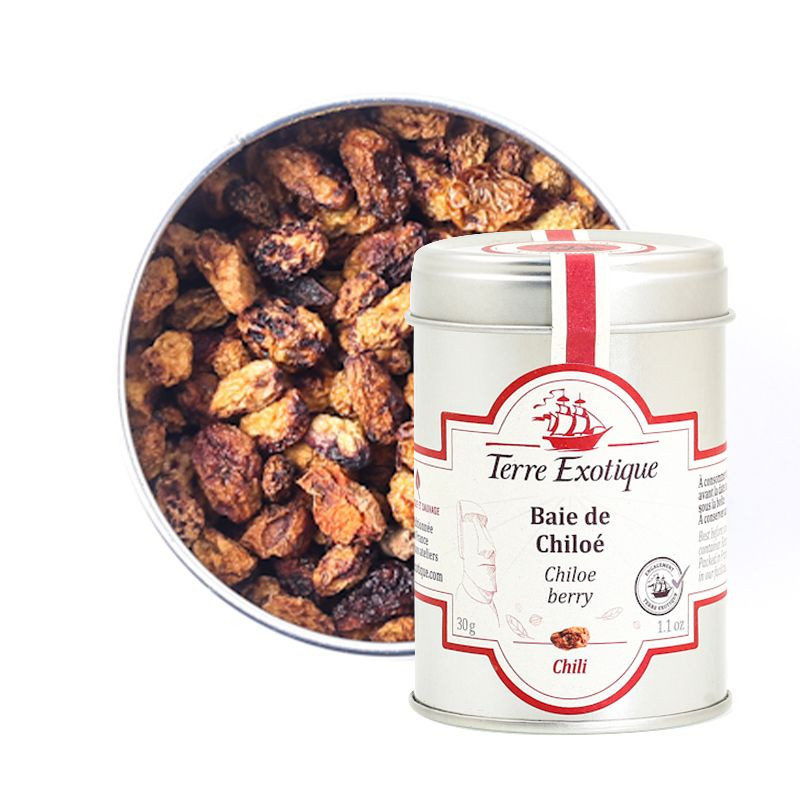

cff-hk@classicfinefoods.com

Price can be display only for registered users
XTEX0084
The Chilean pepper!
The Chiloé peppercorns are picked on Chiloé Island. Used in cooking like pepper. Slightly spicy berries with hints of candied fruits and camphor. Perfect with fish or shellfish. Spices up your grilled meats.
| Native country | CHILI |
|---|---|
| Ingredients | Chiloe pepper |
| Allergen | Absence |
| TRACES EVENTUELLES D'ALLERGÈNES | céleri, sésame, moutarde, fruits à coques. |
For MONDAY arrival - order by MONDAY 12 noon
For FRIDAY arrival - order by WEDNESDAY 12 noon + 8 days
The Chiloé pepper is picked in the lake region on Chiloé Island off the coast of Chile. It grows in valdivian rain forests on the pacific coast of the island. The humid and cool oceanic climate of the Chiloé archipelago encourages the flowering of the Chiloé pepper.
This pepper grows in the wild in Chile and
Argentina on a tree called Drimys winteri.
The tree gets its botanical name from Captain
William Winter who discovered the tree in the 16th century in Patagonia whilst on a expedition for the Queen of England. "Drimys" means acrid in Greek.
They were picked by the Mapuche people.
In native mapudungun, "Mapuche" means people (che) of the land (mapu).
Nowadays, the inhabitants of the island call the pepper "Pimienta chilota" as it looks like a peppercorn (Piper nigrum). They use it for seasoning. Once ground, the berry has similar organoleptic properties to peppercorns (round, wrinkled, brown, slightly spicy and fruity). The literal translation is "pepper from Chiloé". Chilean people use the pepper to enhance poultry dishes, pork (tripe), stews, steak or fish tartar with lemon.
The Chiloé pepper and the Tasmanian pepper are part of the same botanical family, and have similar characteristics. They are flowering, seed-bearing plants (angiosperms). Like the Chiloé pepper, the Tasmanian pepper plant has a 3-year life cycle, with a rich harvest followed by a modest harvest and then a very weak harvest. These two peppers grow on opposite sides of the globe. This is directly linked to when the supercontinent Pangaea fragmented at the end of the Triassic period (200 million years ago).

XTEX0084
The Chilean pepper!
The Chiloé peppercorns are picked on Chiloé Island. Used in cooking like pepper. Slightly spicy berries with hints of candied fruits and camphor. Perfect with fish or shellfish. Spices up your grilled meats.
| Native country | CHILI |
|---|---|
| Ingredients | Chiloe pepper |
| Allergen | Absence |
| TRACES EVENTUELLES D'ALLERGÈNES | céleri, sésame, moutarde, fruits à coques. |
For MONDAY arrival - order by MONDAY 12 noon
For FRIDAY arrival - order by WEDNESDAY 12 noon + 8 days
